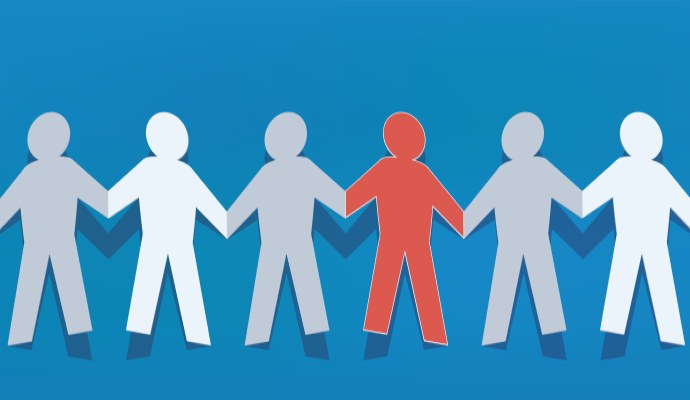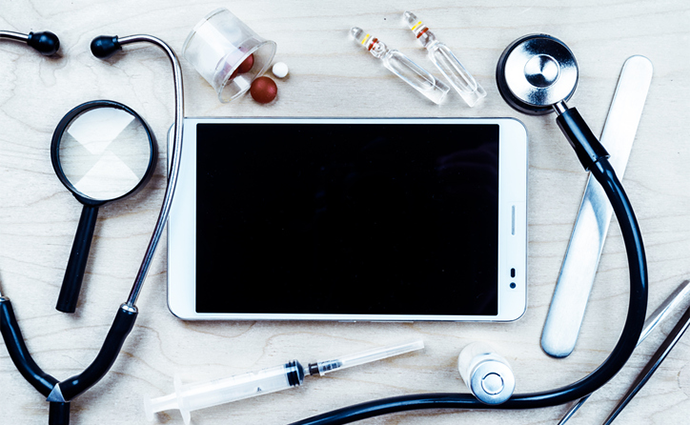Understanding Key Telehealth Disparities & Patient-Facing Barriers
Though the telehealth spike in recent years has largely been beneficial for patients, there are several entrenched care gaps and access barriers widening health inequities that must be addressed.

Source: Getty Images
- Telehealth is here to stay — this oft-repeated phrase now sounds trite, but as the COVID-19 pandemic wears on, it is more accurate than ever.
As 2022 dawned, there was an increase in telehealth utilization in every US census region, according to data collected by FAIR Health. This increase occurred for the third straight month, with telehealth use jumping 7.3 percent in November 2021, 11.4 percent in December 2021, and 10.2 percent in January.
Even among older adults, who typically use telehealth less than younger age groups, telehealth use in 2020 shot up to nearly 52.7 million from 840,000 virtual visits in 2019, a 63-fold increase.
But as telehealth use rose, it became increasingly apparent that not all Americans access and benefit from the care modality equally. Numerous barriers stand in the way, and the pandemic brought these disparities to the forefront.
Here are some of the key disparities and barriers associated with telehealth use:
DEMOGRAPHICS: RACE, AGE, & LOCATION
Study after study has shown differences in telehealth access and usage among racial minorities, older age groups, and those living in rural areas.
Older adults and Black and Hispanic patients were less likely to utilize telehealth tools than their White and Asian peers, researchers reported in the Journal of the American Medical Informatics Association in September 2020.
Similarly, research conducted more recently found that compared to White people, Black and Hispanic people were 35 percent and 51 percent less likely to use telehealth, respectively.
Not only that, but disparities based on demographics also spill over into the pediatric telehealth arena. Publicly insured Black and Hispanic children had lower odds of any telehealth use, as did those who lived in rural areas and were members of lower-income families, according to one study.
Race and age were also linked to the type of telehealth modality a patient is more likely to use. For example, low-income, older, male, and Black cancer patients were less likely to engage in video-based telehealth.
Further, a federal report released in February shows that Black individuals and those older than 65 years had higher proportions of audio-only visits than their counterparts.
There is also a rural-urban divide apparent in telehealth usage trends. During the pandemic, the increase in telemedicine use was greatest among patients in metropolitan areas, with 50 telemedicine visits per 10,000 people occurring in urban areas compared with 31 visits per 10,000 people in non-metro areas.
This holds true for adults older than 65 years as well, with one study showing that Medicare beneficiaries living in metro areas were more likely to report that they used telehealth services.
To alleviate the telehealth access issues facing rural Americans, many provider organizations that received funds from the Department of Agriculture's Emergency Rural Health Care Grants program plan to expand telehealth capabilities.
But, in addition to funding, legislation needs to be enacted to enable access to telehealth in rural areas permanently.
During the pandemic, regulatory waivers made telehealth more accessible to rural Americans by removing geographic requirements and expanding originating sites for telehealth, and allowing federally qualified health centers and rural health clinics to continue offering virtual care services. But these waivers only extend until five months after the public health emergency officially expires.

Source: Getty Images
DIGITAL DIVIDE
The digital divide is one of the most pressing issues in telehealth. The term refers to "the economic, educational, and social inequalities between those who have computers and online access and those who do not," according to Merriam-Webster.
The digital divide manifests in many ways, including lack of access to needed technology, low digital literacy, and uneven broadband access.
"Telehealth represents an immense opportunity to connect patients who have been disconnected from the healthcare system," said Kate Kirley, MD, director of chronic disease prevention and programs at the American Medical Association, during a Telehealth22 panel discussion. "But we need the tech to do that. We need broadband access to do that…So, there's a lot of pieces that need to come together."
Technology access
The populations that could benefit most from not traveling to clinics for in-person care, such as low-income populations, may not have access to the technology needed to facilitate virtual visits.
A RAND Corporation report shows that audio-only telehealth visit volumes remained higher than video-based care at safety-net health clinics through the COVID-19 pandemic, especially for behavioral health services. Similarly, research shows that audio-only telehealth supported care at federally qualified health centers during the pandemic.
As noted above, non-White and older individuals tend to use telehealth less than their White and younger counterparts, and technology access may be one reason why.
Patients in older age groups and those who are Black were more likely to use audio-only telehealth than video-based care, one study published last November showed.
Another study revealed that Black patients with cardiovascular disease (CVD) prefer recording and sharing blood pressure (BP) via a text-based program rather than an online patient portal, likely because the latter has higher technical requirements than the text-based program.
Researchers from Boston have coined the term digital redlining to describe the health inequities and structural racism that maintain barriers to technological access.
"Without addressing these critical, less often discussed elements of telehealth implementation, it is our belief that telehealth will fall short of its promise and, rather than mitigate health inequities, will perpetuate health inequities in the very communities that stand to benefit most from its implementation," said Katherine Gergen Barnett, MD, vice chair of primary care innovation and transformation at Boston Medical Center, in the press release.
Digital literacy
The inability to use digital solutions and tools for care holds many populations back from experiencing telehealth's benefits.
Patient sociodemographic factors largely influenced whether a telehealth video visit was successful or not, with racial minority status and older age linked to unsuccessful visits. And research shows that having medical assistants work with patients to connect to video visits increased the likelihood of a successful connection, indicating a need for technological support.
This type of support is especially needed among vulnerable populations, like those who do not have stable housing.
The University of Texas Health Science Center at Houston (UTHealth), which provides teletherapy to the homeless, has developed strategies to combat the lack of digital literacy, according to Jane Hamilton, PhD, assistant professor of psychiatry and behavioral sciences and director of the Mental Health Services and Outcomes Research Program at UTHealth, during a Telehealth22 panel discussion.
Healthcare workers assess a patient's capacity to conduct a video visit or use an app during their first therapy session and train them if needed, Hamilton explained. The health system also ensures that patients can test their devices before their scheduled teletherapy appointment and trains all staff, including the therapists, to troubleshoot technology issues.
Broadband
The FCC reported that 14.5 million lacked access to broadband at the end of 2019, but that figure may have spiked significantly since. According to the independent research organization BroadbandNow, at least 42 million Americans lacked access to terrestrial broadband internet in 2021.
A survey released last year shows that 45 percent of US adults said that access to technology, including broadband, is a barrier to telehealth. Without secure and reliable internet connectivity, patients cannot access many platforms that enable virtual care.
The federal government has been pouring millions into expanding broadband access across the country. In March, the Federal Communications Commission announced plans to authorize more than $640 million to support new broadband deployments in 26 states.
Further, the Biden administration is prioritizing the expansion of reliable broadband.
"[Broadband access is] a large part of what the infrastructure bill from the federal government is supposed to address," said Anthony Slonim, MD, president and CEO of Renown Health, in an mHealthIntelligence article. "And so hopefully, over time, that will get better."

Source: Getty Images
PRIMARY LANGUAGE
People whose primary language is not English often face hurdles to telehealth access.
Research published last November shows that patients with limited English proficiency were less likely to use video when accessing virtual services during the pandemic than adults comfortable speaking English.
Another study, which included interviews with staff and patients at two federally qualified health centers that primarily serve Chinese and Latino immigrants, showed that having bilingual personnel helped facilitate telehealth visits.
"We're fortunate because we have many staff members who are bilingual in one of those languages," said a leader from one of the clinics, according to the study. "We're usually able to do direct translation during our clinical encounters."
People who were not comfortable speaking in English were also less likely to use telehealth to get a COVID-19 test initiated, according to data published last year.
Some providers are being proactive about breaking down language barriers.
For instance, Mass General Brigham in Boston is rolling out a single video interpreter service for video visits and at the bedside.
"With one click…that brings an interpreter on in less than 30 seconds, in 40 video languages and 200 audio languages," said Lee Schwamm, MD, vice president of virtual care at the health system, in a phone interview with mHealthIntelligence.
Loyola Medicine in Illinois also recently announced that it had implemented an American Sign Language (ASL) feature to assist deaf and hard-of-hearing patients participating in virtual appointments. Overall, Loyola provides medical interpretation in 250 languages.
HOUSING
Research shows that telehealth can help people without stable housing gain access to care but ensuring they can first access the tools needed is a challenge.
One study published last year shows that substance use disorder patients experiencing homelessness were less likely to have a telehealth visit than people with stable housing.
"Access to key infrastructure components, including telephones, internet, and private or safe space, is vital for use of behavioral healthcare through telehealth," the researchers wrote. "It is plausible that [people experiencing homelessness] lack stable access to these components essential to complete appointments."
This was also a hurdle UTHealth faced in its efforts to provide teletherapy to the homeless, Hamilton said in a Telehealth22 panel discussion. The health system obtained a pilot residency training grant from the American Psychiatric Association to provide cell phones and low-cost cell services to the unhoused participants.
PRESCRIPTION OF CONTROLLED SUBSTANCES
Before the pandemic, a patient could only be prescribed controlled substances via telemedicine if an in-person visit occurred beforehand. As COVID-19 cases surged, the Drug Enforcement Administration (DEA) waived the requirement.
This move expanded access for patients who need controlled substances to treat various conditions, including mental health issues and substance use disorders. One study shows that after the requirement was relaxed, there was an increase in the use of telehealth to initiate buprenorphine, a substance use disorder medication.
But the requirement has not been permanently waived yet, and many organizations are calling on Congress to do so.
In March, 72 organizations, including the American Telemedicine Association and American Psychiatric Association, sent a letter to the DEA and Department of Health and Human Services (HHS) urging them to lift the requirement permanently.

Source: Getty Images
PATIENT PRIVACY CONCERNS
Though patient privacy during telehealth encounters is protected by many of the same laws governing in-person visits, such as the Health Insurance Portability and Accountability Act, privacy concerns may hold patients back from availing of virtual care offerings.
A survey released last December revealed that more than half of global telehealth providers had experienced cases where patients refused to participate in a virtual visit either because they did not trust the technology or due to privacy or data concerns.
Not only that, but privacy is a significant concern for patients receiving virtual care for sensitive medical conditions like HIV. Participants struggled to find spaces in their homes that would ensure confidentiality during the visits, and some patients found it difficult to discuss their personal information virtually, according to a study published in January.
The issue of privacy is also a key concern for immigrant patients.
Telehealth is expected to remain a crucial part of care delivery. But to truly improve patient care through virtual care modalities, the above barriers will need to be torn down.
